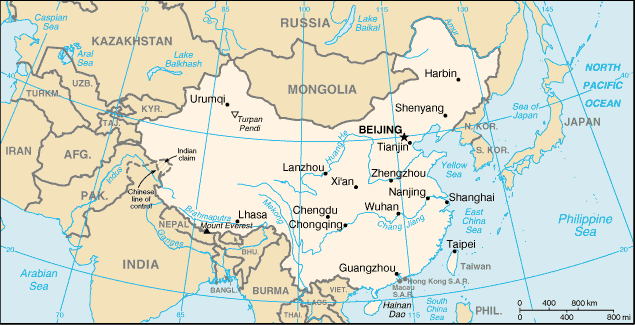
Peoples Republic of China

China’s Politics: Part 1
I.
Basic themes found in discussions of Chinese politics
a.
Long tradition of existence as a civilization
b.
Strong
centralized rule
c.
Pivotal
spot in East Asia
d.
Abundant
human and natural resources
e.
Population
concentrated along coasts and major rivers
f.
Irrigated
agriculture required centralized control
II.
Identity
a.
Periods
i.
Imperial 221 B.C. – 1911
ii.
Republic 1912-1949
iii.
Communist 1949-
b.
Imperial
i.
Dynastic rule based on
1.
Mandarins
– early meritocratic civil service
2.
Confucian
ideology – group over the individual, harmony over conflict
3.
Early
penetration - centralized rule – tax collection
4.
Absorption
of invaders, who were unable to change structures/culture
ii.
Fall of imperial rule
1.
Societal
changes 18-19th centuries
a.
Population
growth
b.
Economic
problems
c.
Mounting
social unrest
2.
International changes
a.
Western
imperialism proves too strong
i.
Opens China to trade
ii.
Introduces opium (Opium war 1832-42)
iii.
Repeated failure of emperor to modernize, learn from west
iii.
Revolutionary change to Republic
1.
Sun Yat-sen – western exposure, introduces western political ideas to China,
founds “Republic of China” in 1912
2.
Disintegration
of centralized rule follows, warlords take over
3.
Nationalist Party (KMT) - emerges, attempts
to rule through fragile coalition with warlords
4.
Chinese Communist Party (CCP) forms in 1921 of student radicals, inspired by
anti-imperialist ideology of Russia, common hostility to west
5.
Chiang Kai-shek takes over Nationalist party, forms temporary alliance with CCP, then
crushes it in Shanghai massacre of 1927
6.
CCP takes
to the hills
7.
KMT
attempts to rule through alliance of big business, foreign powers and landlord
class
8.
KMT –
falters when facing Japanese imperialism, fails to ally itself with CCP against
Japanese
9.
CCP
organized peasant resistance to Japanese imperialism, used guerilla war tactics
10.
CCP
defeats weakened KMT after WWII; KMT retreats to Taiwan
11.
People’s
Republic of China
declared October 1, 1949
iv.
Role of the State, penetration, industrialization under Communism
1.
Under
leadership of Mao tse-tung, develops alternative view of communist
revolution than that of Russia
a.
Russia
– urban revolution based mostly on workers
b.
China –
rural revolution based mostly on poor peasants
2.
China’s
economy under communism
a.
1949-1953 - Early “NEP” period – mixed economy, State controls commanding
heights, some planning, some markets
i.
Land reform
ii.
Cultural purification – ends opium/prostitution
iii.
Women’s rights enhanced
b. 1953-1957 – First Five Year Plan
i. End of NEP policies
|
1.
Nationalization
of all means of production
2.
Comprehensive,
involuntary planning
c.
Great Leap Forward – 1958-60
i.
Mao argues that industry/urban emphasis had violated spirit of Chinese
communism
1.
Wants
dissemination of modernity to countryside (e.g., backyard “steel ovens”
2.
Uses
ideological exhortation (rather than monetary rewards) to inspire worker output
3.
Starts
agricultural communes
4.
Flops
economically
a.
Famine
b.
Decrease
in production
ii.
1960-1965 Return to Soviet model
iii.
1966-1976 Great Proletarian
Cultural Revolution
1.
Return to
heavy political emphasis – ultra-egalitarianism
2.
Attack on
party “capitalist roaders”
3.
Attack on
“all forms of bureaucratic domination”
4.
Attack on
“all bourgeois forms of culture” (i.e., traditional Chinese culture coupled
with Western individualism by “Red Guards”
5.
Attack on
“experts” and “intellectuals” – reliance on “the masses”
iv.
Mao’s death in 1976 seals end of this experiment, seems to confirm that at least some
inequality necessary to run a modern economy…
v.
Back
to the capitalist road: Rule of Deng Xaio-ping
(starts in 1976, continues)
1.
Does more
than advocate a return to Soviet style planning
2. Resurrects NEP-like policies (socialist market system)
"During the primary stage of socialism, the State adheres to the basic economic system with the public ownership remaining dominant and diverse sectors of the economy developing side by side, and to the distribution system with the distribution according to work remaining dominant and the coexistence of a variety of modes of distribution." (Amendment 3)
"Individual, private and
other non-public economies that exist within the limits prescribed by law are
major components of the socialist market economy." "The State protects
the lawful rights and interests of individual and private economies, and guides,
supervises and administers individual and private economies." (Ibid)
a.
Decollectivizes
agriculture (see amendment 1 article 2 of constitution)
b. Allows major role for private industry, allows emergence of stock market (see amendment 1 article 1 of constitution)
1. Market's "regulatory" role acknowledged (Amendment 2, arts.7, 9)
c.
State
retains (however reluctantly) commanding heights (Amendment 2, art. 5)
i.
100,000 state owned firms
ii.
100 mn workers
iii. Drains state budget, but fear of social dislocations keep them on life-support

d.
Central
planning increasingly superceded by markets, decentralized decision-making
i.
Agr. Communes replaced by “household responsibility system”
(amendment 2, art. 6)
ii. Rural industries develop run by local govt and private sector (prevents overly rapid urbanization
e. Economic incentives supersede ideological ones
3.
Adds foreign investment and trade (export led industrialization based on
cheap labor)
a.
Strong
ties to Greater Chinese community
i.
Taiwan
ii.
Overseas Chinese
b.
South
Korea, Japan, Hong Kong, US
c.
Special
economic zones
4.
Modernizes civil service – professionalizes
Graphs about PRC's Economy
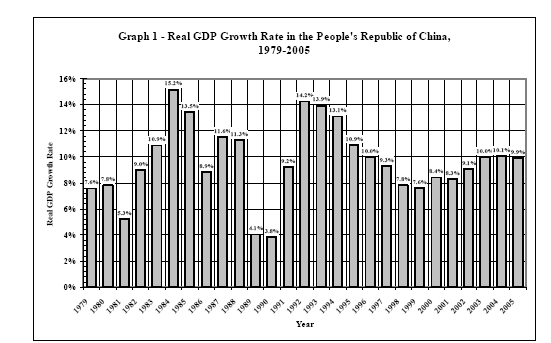
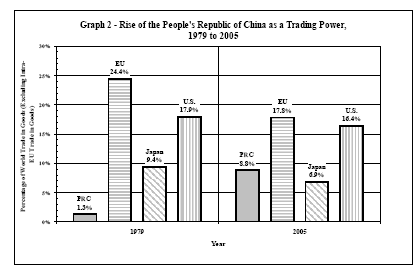
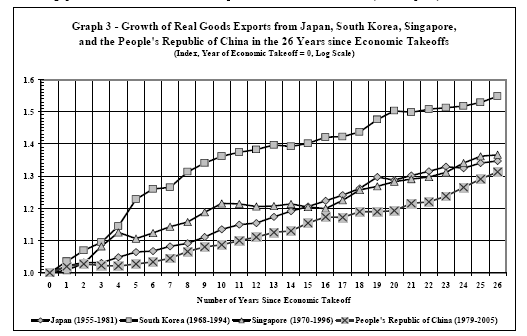
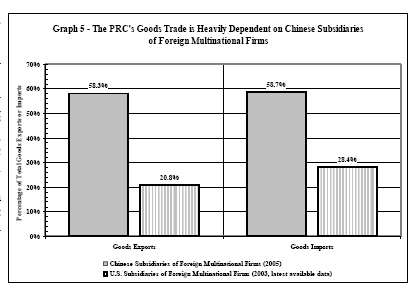
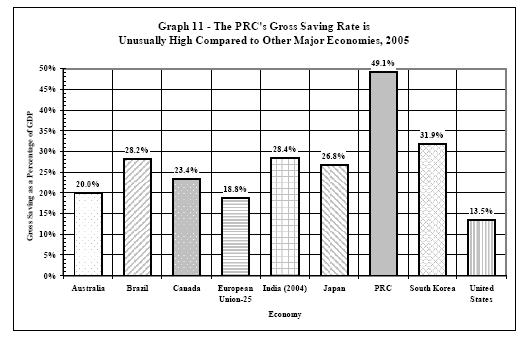
v.
Contradictions of Deng’s policies
1.
Social
a.
Fewer social services, especially in rural areas
b.
Greater inequality among regions, social strata (dual labor market)
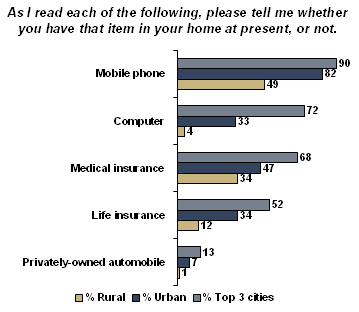
c.
Gender inequality – women kept out of better jobs, lose rights in rural areas (see article 48)
Rural/Urban differences: Gallup Poll April 2007
d.
Rise in unemployment, “floating population” potential for social
explosion
e.
Environmental – excessive coal use, bad air and water, erosion, deforestation,
dumping of waste, toxins
f. Corruption – Bureaucrats and party leaders still have a lot of power, bribery, nepotism persist
g. Aging of the population
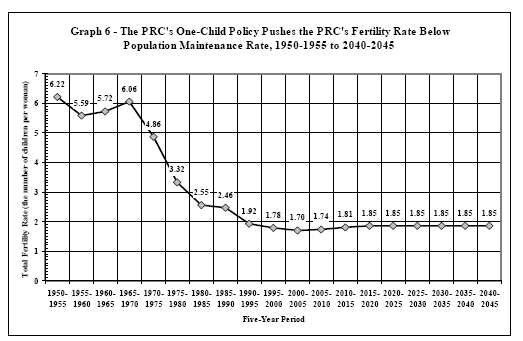
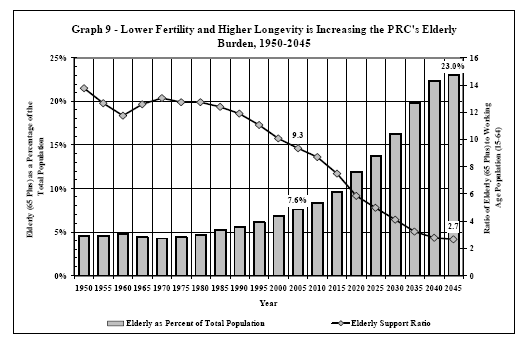
2.
Political
a.
Some leftists
decry capitalist road
b.
Rise of
middle sectors drives call for democracy (see article 35 of Constitution)
c.
Some
small movement to democracy in villages with local elections (see article
111)
d.
Human rights abuses – violations aren’t punished because US believes that trade
sanctions only strengthen radicals
e.
Arms sales issues
f.
Position in the UN – which way to turn?